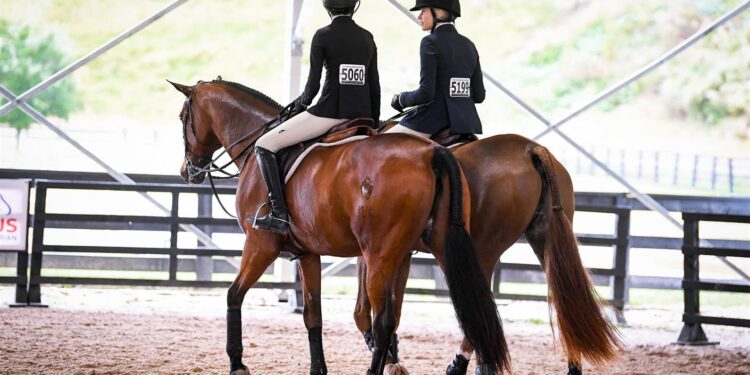The College Sports Commission has issued new guidance that marks a significant shift in its approach to Name, Image, and Likeness (NIL) regulations, softening its previous stance on collective payments to college athletes. Announced this week, the updated framework offers greater flexibility for groups of athletes to receive compensation jointly, a move that could reshape the landscape of NIL deals across collegiate sports. The revision comes amid ongoing debates over fair compensation and regulatory clarity, signaling a potential turning point in how college athletes can monetize their NIL rights.
New College Sports Commission Guidance Eases Restrictions on Athlete Collective Payments
The newly issued guidelines from the College Sports Commission mark a significant shift in the regulation of Name, Image, and Likeness (NIL) payments, specifically easing restrictions on collective payments to college athletes. Under the updated framework, athletes may now receive payments from collective entities-such as alumni groups or booster clubs-without the previous stringent limitations that required individual contracts and separate negotiations. This change is expected to empower athletes by streamlining endorsement opportunities, fostering a more organized and transparent approach to collective compensation, and reducing administrative burdens on both athletes and institutions.
Key provisions in the current guidance include:
- Permitted collective payments: Groups can pool resources to deliver endorsement deals to athlete collectives rather than only individual deals.
- Clearer compliance boundaries: Institutions gain better clarity on permissible activities, lowering the risk of NCAA violations.
- Enhanced athlete representation: Players can negotiate terms collectively through certified representatives or tight-knit groups.
| Previous Restrictions | New Guidelines |
|---|---|
| Individual contracts only | Collective payments allowed |
| Limited booster involvement | Enhanced booster group participation |
| Ambiguous compliance rules | Clear operational standards |
Implications for Athlete Endorsement Deals and Group Negotiations
The latest guidance from the College Sports Commission marks a significant shift in how athlete endorsement deals and collective negotiations are approached. For the first time, there is an explicit allowance for athletes to engage in group-oriented payment arrangements without violating NIL regulations. This development could empower athletes to negotiate more favorable terms through joint marketing efforts, shared endorsement pools, or coordinated appearances, potentially leveling the playing field against powerful brands. Agents, NIL collectives, and athlete representatives are now positioned to explore innovative deal structures that capitalize on the collective bargaining power of athlete cohorts.
Despite this newfound flexibility, compliance remains critical as the Commission emphasizes oversight to prevent undue influence or exploitation. Key considerations for athletes and their management teams include:
- Transparency: Clearly documenting the distribution of payments within groups
- Equity: Ensuring fair allocation to avoid conflicts among group members
- Compliance: Maintaining adherence to school and state NIL policies
| Opportunity | Potential Risk |
|---|---|
| Pooling athlete influence for bigger deals | Complex profit-sharing disputes |
| Coordinated endorsement campaigns | Conflicts with individual agreements |
| Collective brand-building | Regulatory scrutiny over payment channels |
Recommendations for Compliance and Strategic NIL Collaboration in Collegiate Sports
Recent adjustments in NIL regulations emphasize the need for collegiate programs to adopt transparent and proactive compliance frameworks. Athletic departments should prioritize clear communication channels with athletes and third-party sponsors to ensure all agreements align with evolving guidelines. Establishing dedicated compliance teams trained in the nuances of collective payments can safeguard institutions from inadvertent violations while promoting equitable NIL opportunities. Furthermore, universities are encouraged to develop standardized contracts and reporting mechanisms that streamline monitoring efforts without stifling athlete creativity or entrepreneurial endeavors.
Strategic collaboration between colleges and NIL platforms is now more crucial than ever to maximize benefit while staying within regulatory boundaries. Interactive partnerships, including group licensing deals and coalition marketing initiatives, must be crafted with explicit attention to the revised guidance’s softened stance. Below is a quick-reference table outlining key areas for strategic NIL engagement and corresponding compliance recommendations:
| NIL Strategy | Compliance Focus | Best Practice |
|---|---|---|
| Group Licensing Deals | Collective approvals & disclosure | Formalized contracts reviewed by compliance |
| Coalition Marketing | Equitable revenue distribution | Transparent payout formulas agreed upfront |
| Third-party Endorsements | Alignment with institutional policies | Ongoing education programs for athletes |
- Leverage technology platforms to track NIL activities and maintain comprehensive audit trails.
- Leverage technology platforms to track NIL activities and maintain comprehensive audit trails.
- Regularly update training materials for athletes and staff to reflect the latest NIL regulations and best practices.
- Encourage open dialogue among athletic departments, compliance teams, athletes, and external partners to promptly address emerging compliance issues.
- Implement standardized reporting procedures to facilitate transparency and timely reviews of NIL agreements.
By prioritizing these strategies, collegiate programs can effectively navigate the evolving NIL landscape while fostering a compliant and supportive environment for athlete entrepreneurship.
If you want me to help you further with formatting, expanding content, or any other details, just let me know!
The Conclusion
As the landscape of college athletics continues to evolve, the College Sports Commission’s recent easing of restrictions on collective payments marks a notable shift in NIL policy. This updated guidance could pave the way for more collaborative endorsement opportunities among athletes, potentially reshaping how collegiate players capitalize on their name, image, and likeness rights. Stakeholders across the industry will be watching closely as institutions, athletes, and sponsors adjust to this more flexible framework in the coming months.






























